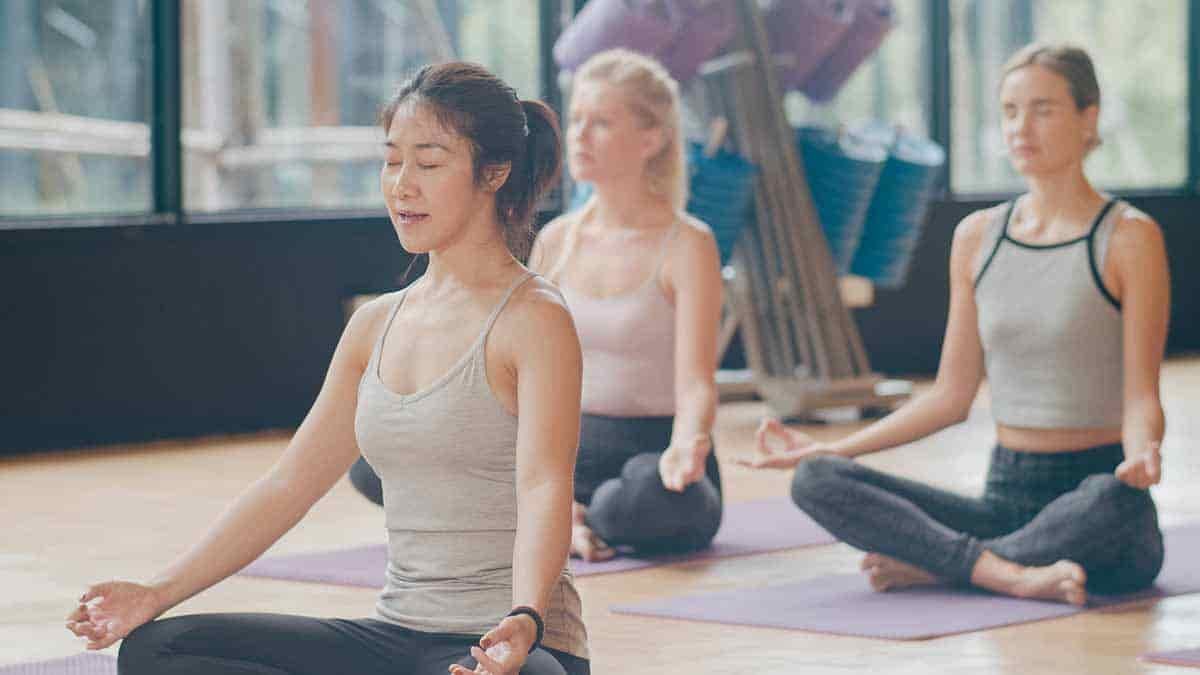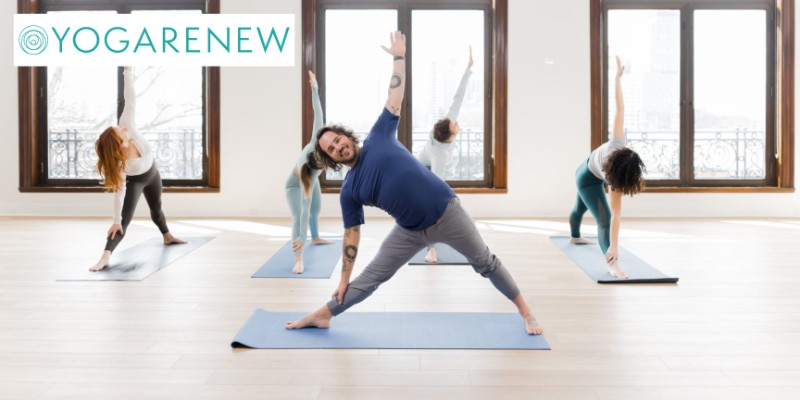
oga Alliance is a nonprofit organization that supports and promotes the practice of yoga in America. The Yoga Alliance is the global body that sets standards for yoga and also certifies teachers. Yoga Alliance's mission statement is to help bring clarity, quality, and consistency to your understanding of yoga by establishing a credentialing system founded in ethics and promote unity within diversity.
A Yoga Alliance Certification is a credential that verifies the teaching experience, knowledge of yoga asana, and sequencing skills. Additionally, upon joining the Yoga Alliance, you’ll have access to various certification programs that will allow you to do more.
Read on to discover more about Yoga Alliance Certifications and what is required to receive them. Additionally, we’ll discuss some of the specifics around joining the Yoga Alliance as well as some frequently asked questions about doing so.
Article Topics
What is Yoga Alliance Certification?
Yoga Alliance provides certification for Registered Yoga Instructors (RYT), which makes them eligible to teach certain styles of hatha-yoga – Ashtanga Vinyasa Yoga being one example. There are various certifications from the Yoga Alliance online training, each requiring different prerequisites and CEUs.
A Yoga Alliance Certification is not a license but instead verifies your experience as a Yoga teacher. Yoga Alliance Certification is the leading credential for those who want to teach yoga in any studio in America!
In addition to this, having a certificate from the Yoga Alliance means it’s recognized worldwide! As long as there are instructors at these locations who also hold qualifications through Yoga Alliance International, anybody holding one certificate will automatically be able to teach another person without taking additional training courses.
Levels of Certification (200, 300, 500 & CE)
The Yoga Alliance Levels of certification are different in terms of how many hours have been completed. The 200-hour level is the minimum requirement for becoming a registered yoga teacher and carries a registry number from Yoga Alliance International.
The 200 Level certification includes the Yoga Alliance’s Yoga and Holistic Educator Certification, which introduces yoga therapy. Yoga therapy is a therapeutic yoga practice that has been shown to help with many physical and psychological conditions.
Yoga Alliance 200-hour certification also includes:
- An introduction to Yoga philosophy.
- Application of yoga in the classroom or workplace through experiential learning.
- More extensive training for teachers who wish to specialize in specific styles of yoga.
All Yoga Alliance members must be certified at the 200-hour level or higher to use the Yoga Alliance name in any way. If you are a Yoga Teacher Trainer and want your students to register with Yoga Alliance school online for their continuing education hours, they need either this certification or another that has been verified as equivalent by Yoga Alliance International staff onsite.
The 300-hour certification offers more training, including teaching adults and children with disabilities as well as using props like straps or blocks to teach alignment principles and advanced poses such as headstands. It also includes an additional 20 hours on business practices.
This course covers topics like:
- Facilitating a safe space for all students
- Understanding the landscape of diverse communities practicing yoga today.
- Incorporating physical adjustments into your teachings.
- Using props on beginner-level classes that provide tactile resistance or other methods to challenge participants’ strength safely without injuring them or yourself- plus so much more!
The Yoga Alliance 500-hour certifications provide even more specific knowledge about different types of anatomy, therapeutic counsel techniques used in hatha yoga classes, specialized breathing techniques (pranayama) that are often taught in beginner courses but not at all levels.
It’s specifically designed for practitioners who want to work with clients dealing with health conditions such as:
- MS
- Parkinson’s
- Cancer
- Severe back pain
Frequently Asked Questions Regarding the Yoga Alliance Certification
The Yoga Alliance certification program:
- Trains teachers with quality standards
- Ensures they are up to date on research findings of teaching methods
- It Covers legal topics like how to protect yourself from liability lawsuits as an instructor.
- Provides continuing education for life.
With all the information provided, there are still some frequently asked questions about Yoga Alliance Certifications, like Yoga Alliance registration and more.
How Do I Sign up Online for Yoga Alliance?
Yoga Alliance is a non-profit association that provides registration to yoga teachers and schools, as well as fostering a yoga community dedicated to maintaining high quality, safe, and equitable yoga classes. There are a number of benefits to being a member, such as networking with other yoga instructors, credentials, and access to additional resources.
In order to sign up for one of these membership types, you must first create an account on the Yoga Alliance website. This can be done by clicking the orange “join” button at the top right of the screen, then entering your name, date of birth, contact information, and password. From here you will have the choice of registering as a school or teacher.
How Do You Become Yoga Alliance Certified?
The Yoga Alliance is an organization of yoga teachers and schools that offers certification levels. The first level, RYT-200 (Registered Yoga Teacher 200 hours), can be done two months through online courses or a condensed weekend workshop at a retreat center.
You can become Yoga Alliance Certified by taking a Yoga Alliance-approved course from an RYS or Registered Yoga School. You can also be certified through the Certification of Experienced Registered Yoga Therapist program (CEYT).
The original Yoga Alliance standards called for 100 hours of training today, the 200-hour certification is standard practice and most popular among teachers. The 500-hour level offers a deep dive into teaching adults and children with disabilities and using props like straps or blocks to teach alignment principles and advanced poses.
Aspiring 300 hours Certified Specialty Teachers might take the CST program one day per week for 12 weeks, while other programs last up to five days per year over four years. All certifications require completion of classroom instruction, but some also include practice time on your own.
Does Yoga Alliance Recognize Online Training?
Yoga Alliance is the largest nonprofit organization that represents the yoga industry. More than 7,000 yoga schools are currently registered and more than 10,000 registered yoga teachers. They are almost like a lobbying arm that has a board of directors, a team in leadership roles, and committees who represent both in-person and online yoga:
- Support the self-regulation of the yoga industry and worldwide entrance to safe, accessible, equitable, and high-quality yoga practices
- Protects the yoga community from unfair taxation, patents, and government regulation
- Fortify the use of all types of yoga styles and traditions
- Has a Code of Conduct and Scope of Practice that ensures yoga is taught ethically and responsibly
- Provides effective business practices for yoga schools and teachers to further ensure success
Online yoga training has become a booming business, especially after the COVID-19 epidemic. Yoga Alliance understand this and, as such, provides a 2021 Registered Yoga School (RYS) Online Teaching Exemption for training that meets the following requirements in participation and curriculum so they uphold the highest standards:
- Online programs are required to have both asynchronous and synchronous teaching methods
- At least half of the total hours must be taught by a Lead Trainer, but there is a maximum of five lead trainers per training
- The methods of testing their trainees must be clearly defined for both the competency in asynchronous and synchronous workspaces
- Agree to “opt-in” to the Yoga Alliance CommUnity, which is an online space where members teaching online can share their experiences and resources
Each school is required to complete a Yoga Alliance survey and adhere to the Yoga Alliance school online learning best practices. Yoga Alliance is also allowed to request access to the studio’s online teacher training materials, if necessary. This can include any pre-recorded videos, testing benchmarks for competency, and final test results
What Does Yoga Alliance Consider Asynchronous and Synchronous?
If you have already visited an online yoga studio’s Website, you have probably noticed they offer a mixture of pre-recorded videos along with live classes that are streamed through their site. If they are a member of Yoga Alliance, this type of teaching is required to be a member of this vast online community.
Asynchronous teaching means the learning is not done in real time. Students sometimes enjoy this method of teaching because they can learn at their own pace and on their own schedule. These videos are pre-recorded and on demand, giving yoga students the luxury to learn this craft any time and from anywhere in the world.
However, Yoga Alliance also requires online training to be synchronous. This means the yoga teachers are actually presenting their instruction in real time through a streaming device. They publicize the day and fixed start and end time clearly on their Web site so that students know they can learn in real time and interact with the yoga trainer.
The Yoga Alliance also supports the growth of the industry through education, and as such upholds various certifications in which yoga instructors and the yoga community as a whole can improve. They provide numerous tools to ensure yoga instructors can grow and develop professionally, including certifications and continuing education credits.
What Is the Difference Between YTT and RYT?
In the Western world, Yoga Alliance (YA) is the most recognized and accepted certifying organization. However, there are other organizations with which you can be certified, including RYT-200, YTT, or Hatha yoga teacher training courses in India.
The RYT stands for Registered Yoga Teacher, while YTT means “Yoga Teaching Training.” These acronyms stand for very different programs that vary in length from 200 hours to over 1000 hours!
RYT 300 and RYT 500 are the two most popular levels of Yoga Alliance certification. They only take 300 hours to complete while still providing comprehensive knowledge on all aspects of yoga, including:
- Asanas (poses)
- Philosophy
- Alignment principles
- Breathing techniques
- Meditation practices
YTT Certifications are designed for experienced teachers who already have a solid foundation in yoga and want to deepen their practice. YTT includes one-on-one mentorship, research projects, workshops with regional experts, community service hours, presentations before an international board of examiners, and feedback sessions on teaching methods from peers and mentors.
A minimum of 500 hours is required for completion. There’s a strong focus on teaching methodology, which includes leading classes, designing class series or sequences, sequencing yoga workshops with other experts in their field, such as meditation teachers or Ayurveda practitioners, to name just two!
Which Certifications by the Yoga Alliance Can I Pursue Online?
Yoga Alliance fully supports continued learning for yoga instructors through certification so that the community can continue to grow. This means all Registered Yoga Teachers (RYTs) must meet the Continuing Education requirements below if they want to uphold their Yoga Alliance certifications:
- 45 hours of teaching yoga
- 30 hours of yoga training in one of the Yoga Alliance’s Education Categories
The thirty hours of training must include a minimum of 10 contact hours (which can include either pre-recorded or live sessions through December 31, 2021), and 20 non contact hours. They also encourage members to provide feedback on their RYS so that they can be approved, if necessary. The Education Categories include:
- Techniques, training, and practice
- Teaching Methodology
- Anatomy and Physiology
- Yoga Philosophy, Lifestyle, and Ethics
There are five main certifications one can pursue online from any RYS that is registered with Yoga Alliance. You will want to make sure they clearly state they are registered with Yoga Alliance so that you know you will be able to also register with the proper RYI once you complete their certification.
How Much Does It Cost to Register with Yoga Alliance?
The price of registering with Yoga Alliance depends on if you are planning to register as a teacher or a studio, and whether or not you want extra features like Speciality-Level RYT credentials or an additional location for your yoga school. Conveniently, there is no price difference between foundational and professional level credentials.
The Registered Yoga Teacher training programs cost the same at the foundational and professional levels. They cost $50 in application fees and $65 in annual renewal dues, so the initial cost to register is $115. If you have already taken the foundational RYT credential, you can take any of the Special-Level credentials for an additional $50 application fee.
The Registered Yoga School training programs all have the same price at the foundational, professional, and speciality levels. They cost $400 to apply for the course, and $240 in annual renewal dues. This means that the initial registration costs $640. For each additional yoga school registered, it adds $50 to the renewal fee.
The cost of registering with Yoga Alliance varies slightly depending on your needs, ranging from $115 for a RYT course not focused on special credentials, to $640+ if you want to register multiple yoga schools.
How do you apply for yoga school registration?
The application process can be broken down into three parts, and on average takes three hours and fifteen minutes to complete. First, you enter some basic information about your school and your teaching program, which takes about 10 minutes.
Next you start part one of the application, which will cover things such as
- Types of credentials you will teach
- Who your lead instructors will be
- Copies of your policies and codes of conduct.
This section of the application process will take about one hour to complete.
After that you will move onto part two of the application, which covers your training curriculum in more detail. This can be broken down into two further sections, one covering your letter of intent and ratio of trainers to trainees, and one covering your curriculum and methods of assessment. This section will take two hours to complete.
Afterwards, you pay the application fee and your application gets sent to Yoga Alliance’s Credentialing Panel, where they will take up to eight weeks to decide if your Yoga School meets their standards. If your application is accepted, you’ll become a Registered Yoga School. If it is rejected, they will send you information on what to do next and how to resubmit.
How do you sign up as a RCYT?
Becoming a Registered Children’s Yoga Teacher requires both 200 hours worth of yoga instructor training and 95 hours of children’s yoga instructor training. Teachers must also complete 30 hours of teaching children’s yoga, which can only be completed after first finishing all the training hours.
How do you sign up as a RPYT?
The requirements for becoming a Registered Prenatal Yoga Teacher include 200 hours of yoga instructor training and 85-hour prenatal yoga instructor training course. Like becoming a RCYT it also requires 30 teaching hours in prenatal yoga.
Now that the different types of yoga teacher registration have been covered, the next step is finding a registered yoga school.
Conclusion
A Yoga Alliance Certification is a credential that verifies the teaching experience, knowledge of yoga asana, and sequencing techniques. It also helps develop new ways to train instructors to keep pace with changes in the field.
The Yoga Alliance certification consists of three levels, each with a different set of requirements. It is the only national yoga organization recognized by the US Department of Education and has been endorsed as an approved training provider for insurance companies like Aetna. If you consider teaching or have considered teaching in the past but never completed your teacher training, consider getting certified through Yoga Alliance.



